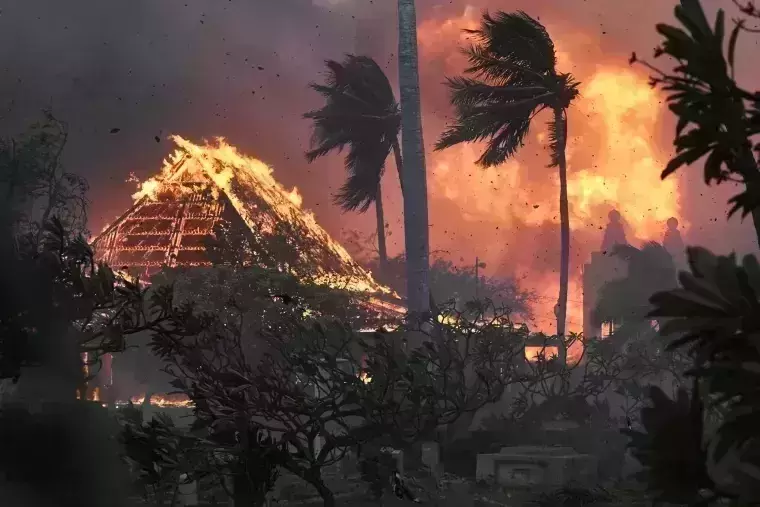
Hawaii wildfires spark climate change denial and conspiracy theories
text_fieldsMaui: Amidst the devastating wildfires in Hawaii, climate change-denying social media accounts are capitalising on the tragedy to spread conspiracy theories suggesting that high-energy lasers were employed to ignite the flames.
These posts, some claiming intentional fire-setting to promote climate-friendly cities, have garnered millions of engagements on platforms like X, formerly known as Twitter. The amplification of this narrative underlines a disturbing trend observed by disinformation experts, wherein conspiracy theorists exploit extreme weather events to challenge climate change science.
Stew Peters, a far-right radio host, asserted in a post, "Only a Directed Energy Weapon (DEW) can cause this kind of destruction." Such narratives falsely attribute the fires to advanced technologies, diverting attention from climate change.
Arunima Krishna, a Boston University professor specialising in climate disinformation, said, "Any time there is a climate-related event and advocates call for accelerated climate action, there usually is a corresponding attempt to discredit climate science, disconnect the event from climate change and blame it on something else."
Posts on X and other platforms feature manipulated visuals purportedly depicting Hawaii being targeted by directed energy systems. These systems, utilising concentrated electromagnetic energy, are under development in the US for drone and missile defence. However, the images circulating online are unrelated to the fires that have claimed lives and destroyed property.
Fact-checkers from AFP have debunked posts misrepresenting photos and videos, including shots of a SpaceX rocket launch, an oil refinery flare, power lines sparking, and other outdated images.
Some posts have manipulated images to show beams of light in the sky, while others used natural phenomena like unburned trees to argue in favour of laser involvement.
Conspiracy theory expert Mike Rothschild noted, "The theory is especially adaptable to social media because it fits with pictures taken of fires that show beams of light supposedly coming from space." This narrative exploits a lack of understanding about fire behaviour and wind dynamics.
Iain Boyd, a directed energy weapons expert, stated that the conspiracy theory contradicts reality, as the power required to spark such fires would necessitate an "enormous" air or spacecraft, which would not go unnoticed.
Authorities are still investigating the cause of the wildfires, with fallen power lines being one of the possibilities. The National Weather Service had issued warnings about dangerous fire conditions due to strong winds and dry vegetation.
Jennie King of the Institute for Strategic Dialogue highlighted the evolution of wildfire disinformation, from blaming arsonists to targeting specific groups. Recent claims about lasers for climate-friendly cities reinforce the narrative that downplays global warming's significance.
These theories also align with broader worldviews held by supporters of conspiracy theories like QAnon, invoking notions of a shadowy elite group driving their hidden agenda.
The distribution of dramatic visuals, taken out of context, taps into these fears. Rothschild emphasised, "It's easy to use those pictures as 'proof' of what 'they' are doing to us to further their climate change agenda or societal control, and people desperate for answers would rather believe in space weapons than the reality of the climate crisis."






